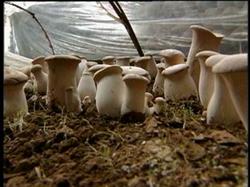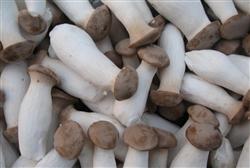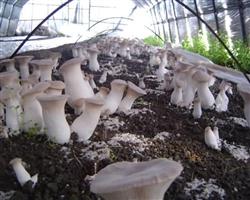Operation of cultivation of Pleurotus eryngii with biogas residue before mushroom emergence

The cultivation of Pleurotus eryngii with biogas residue has the advantages of developing new resources and saving costs, and generally reduces the production cost by about 30%. The operation techniques before the cultivation of Pleurotus eryngii with biogas residue are introduced as follows: 1. Biogas residue treatment: spread the biogas dregs extracted by farmers' biogas digester on the flat ground, allow them to aerate, dry to less than 15% moisture content, and store them. 2. Base material formula: 300 kg of biogas residue (calculated by air-dried material), 300 kg of corncob, 30 kg of wheat bran, 10 kg of calcium superphosphate, 2 kg of urea, 30 kg of lime powder, 5 kg of gypsum powder, 6 bags of mushroom disease elimination, 240 grams of three-dimensional nutritional essence of edible fungi. 3. Sterilization: crush the corncob to the size of peanuts. All raw and auxiliary materials are mixed with water to make the moisture content reach 60%-63%. When sterilizing under atmospheric pressure, the polyethylene mushroom bag with a width of 17 cm to 22 cm should be loaded, and when high pressure sterilization is adopted, it should be replaced by polypropylene mushroom bag. Sterilization should be carried out as soon as possible after bagging: normal pressure sterilization should be maintained for 8 hours when 100 ℃ in the bag, 3 hours for high pressure sterilization, and 6 hours for high pressure steam sterilization. Non-flow operation, after the completion of sterilization, another night of boredom, the effect is better. 4. Sowing and spreading bacteria: when sterilization is completed and cooled to less than 28 ℃ or at room temperature, inoculation can be carried out, and routine operation can be done. During the infection period after inoculation, the traceless solution was sprayed every 3 days or so, and the inspection was carried out to deal with the pollution in time to prevent spread and spread. Under the condition of 25 ℃, the bacteria can be completed in about 25 days, and then maintained for about 15 days for post-ripening culture to facilitate the explosive emergence of Pleurotus ostreatus. The management of mushroom production period is the same as the routine.
- Prev

Cultivation techniques of rare Edible Fungi Pleurotus eryngii
Pleurotus eryngii is a precious fungus suitable for both food and medicine, with thick meat, crisp and tender texture, dense stalk tissue, milky white and rich nutrition, so it is listed as one of the most potential edible fungi in the 21st century. Due to the high pollution rate and low bioconversion rate, there are great ups and downs in production, cultivation quantity and yield.
- Next

Strain characteristics and cultivation points of snow antler (Pleurotus eryngii) 251
1. After the cultivated species are mentioned in the research institute, the temperature must be paid attention to during packaging and transportation, preferably in the morning or evening, to beware of burning bacteria at high temperature; after the bacteria are brought home, they should be put in a cool, dry and ventilated room for dark light culture. after the bacteria are full of bags, it is better to start inoculating for another 7 days. February, September.
Related
- Fuxing push coffee new agricultural production and marketing class: lack of small-scale processing plants
- Jujube rice field leisure farm deep ploughing Yilan for five years to create a space for organic food and play
- Nongyu Farm-A trial of organic papaya for brave women with advanced technology
- Four points for attention in the prevention and control of diseases and insect pests of edible fungi
- How to add nutrient solution to Edible Fungi
- Is there any good way to control edible fungus mites?
- Open Inoculation Technology of Edible Fungi
- Is there any clever way to use fertilizer for edible fungus in winter?
- What agents are used to kill the pathogens of edible fungi in the mushroom shed?
- Rapid drying of Edible Fungi

